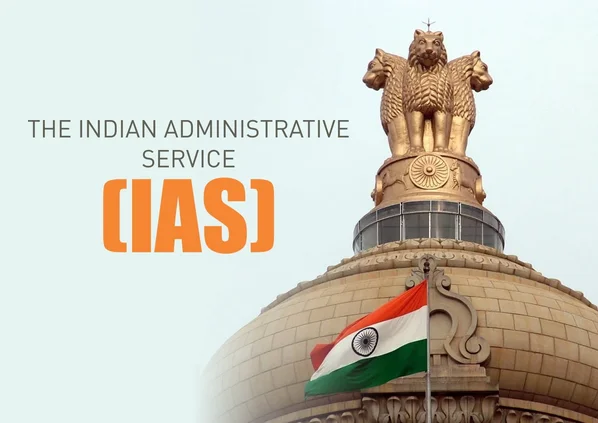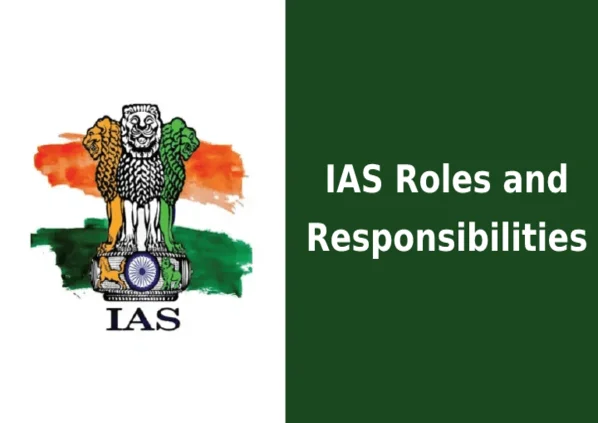






Life of an IAS officer Indian Administrative Service (IAS) officer is considered to be one of the most reputable and desirable careers in India. This is because an IAS officer has the potential to bring about a positive change in the society.
Selection process
Each year, IAS officers are selected through one of the most competitive examinations in the country -Civil Services Exam (CSE). Conducted by the Union Public Service Commission (UPSC), CSE also recruits candidates for other Central and All India Civil Service posts such as Indian Foreign Service (IFS), Indian Police Service (IPS), Indian Revenue Service (IRS), etc.
Life at LBSNAA and Training period
The candidates who are recommended by the commission join the Lal Bahadur Shastri National Academy of Administration, Mussoorie, Uttarakhand where they meet their colleagues for the first time. The total duration of the training period of IAS officers is 2 years which is divided into:
- Foundation Course:
All the candidates who are recommended for Grade A posts including IAS, IPS and IFS are invited to join a 3-month-foundation course at LBSNAA. Thereafter, candidates of different services join their respective academies for training. While IFS join Foreign Services Institute in New Delhi, IRS officers join the National Academy of Direct Taxes, Nagpur and IAS officers have to stay back at LBSNAA.
- Phase 1:
Starting with a 15-week training program at LBSNAA, Phase 1 training also includes Bharat Darshan which is an all-India tour program for IAS officers. The academic module includes Policymaking, land management, soft skills, project management, national security, e-gov, etc. They start their day at 6 AM in the morning with exercise drills and then attend lectures followed by cultural activities in the evening.
- Bharat Darshan:
In phase 1 training, the IAS probationers are divided into small groups and are taken on a tour of India. This is part of the training program for them to experience the rich cultural diversity and heritage of India.
- District Training:
It is a year-long training at the district level where the officers’ study the administrative set up in a particular district by being a part of it.
- Phase 2:
The phase 2 starts with sharing their experiences of the Phase 1 training program with their colleagues. Discussion sessions where the officers articulate their thoughts on various developmental challenges and issues and the ways to resolve them are held during this period. Special sessions by distinguished subject matter experts are also held for them as a part of the learning exercise.
- Assistant Secretaryship:
After completing the induction training session, the officers join their respective deputation. They work under the joint secretary in the ministries for a few months.







- Handling government affairs including policy framing, implementation, and review
- Consulting with various departments and elected representatives
- Managing allocated public funds for various schemes
- Supervising the implementation of different government schemes and policies
- Responding to and coordinating relief operations in response to emergencies such as natural disasters, major accidents, and riots
The functional roles of IAS officers depend on the type of task they are given. They are given three types of tasks:
- Field assignments: These are considered to be the toughest roles an IAS officer can be called upon to perform. After training an IAS officer’s first job is usually a field job. There are their own complexities in the different levels where they work.
- Functions at the Subdivision level: As a sub divisional officer, law and order maintenance, development and administrative management in the sub-division are supervised.
- Functions at a District level: As a district officer, collector or deputy commissioner, an IAS performs the same functions as an SDM including overseeing the SDMs. For most IAS officers, fieldwork normally ends at the district level. Many of them work in the State Secretariat and take positions in the State Government.
- State Secretariat Assignments: Postings from the State Secretariat involve taking advantage of the experience and expertise gained in the field to advise elected representatives to formulate policies and make decisions on government processes.
- Enterprises in the Public Sector: Many officers are posted on deputation to PSU cadres and become part of the higher management of various enterprises in the public sector such as power discoms, industrial units, etc.
- Central Secretariat Assignments: Secretarial level posts for different ministries at the central government level deal with policy review, formulation, and implementation.
There are also provisions for the transfer of IAS officers to private organizations in the short term, such as the United Nations and other international bodies.
IAS Officer’s Power
Powers of an IAS officer have been codified through nearly 300 laws. These have been summarized in All India Service Manuals, which the Department of Personnel updates from time to time. Some of these laws are:
- Code of Criminal Procedure (1973): Sections 107,108,109,110,133,144 and 176 lists the powers granted to the magistrates to maintain law and order.
- Tenancy laws define a collector’s income powers.
- National Disaster Management Act lists the powers of Chief Secretaries and Magistrates in directing operations for disaster relief.
- Arms Act, Drug Licenses Act, Essential Commodities Act, etc. list the powers of IAS officers to enforce regulations in various situations.
- While IAS officers can exercise their powers under these laws, they are accountable to the legislatures of state and central government.
IAS Officer Career
The following is most of the IAS officers ‘ career path. Depending on the allotted cadre, the career paths diverge after probation.
- Phase I Training at LBSNAA
- Training at the district level in the allotted cadre
- Phase II Training at LBSNAA which includes a week-long foreign attachment with one of India’s diplomatic missions abroad
- Central Government attachment at the nominal position of an Assistant Secretary for three months
- Posting as SDM/Joint Magistrate/Sub Collector
- Posting as Municipal Commissioner, DDO/CDO
- Posting as DM/Collector
- Posting at State Secretariats at Director/Joint Secretary level.
- Deputation to the Central Government can be opted for during any stage of service after serving for a few years.
- Principal/Additional Secretary in the State Secretariat/Central Secretariat
- Chief Secretary of a state
- Cabinet Secretary
The Indian Cabinet Secretary’s position is the highest position an IAS officer can aspire to. Chief State Secretary is the highest one can go in the state bureaucracy.
IAS Officer Salary
Basic pay of Rs 56100 has been set by the 7th Central Pay Commission for newly inducted IAS officers. With the Union Cabinet Secretary receiving the highest pay at Rs. 250000, there are a total of 18 pay levels for IAS. In addition, IAS officers usually receive the following benefits while on duty:
- Subsidized accommodation for the government. Postings at the district level get the best houses in India among any government service.
- Household assistance: such as cooks, gardeners, etc. (Depending on the requirement)
- Security cover (Depending on the requirement)
- Most district and state-level posts provide government transportation. Central deputations have fewer vehicle facilities extended to IAS and only officers above a certain rank are getting government vehicles.
- Mobile, internet and telephone charges reimbursement
- Free stay in government residences and bungalows, during the course of duty
- For a driven individual, the life of an IAS officer is both challenging and satisfying. It is the perfect opportunity for young people to participate directly in their country’s administration and development.
